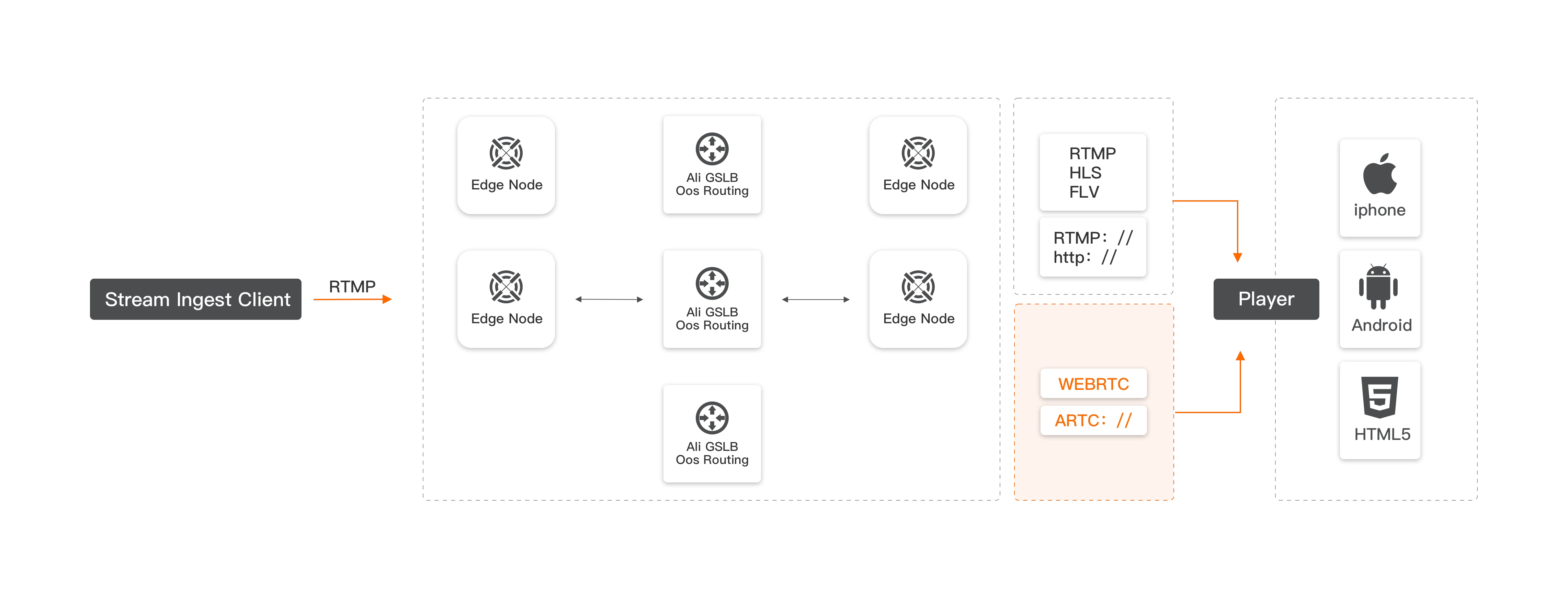
Overview
Real-Time Streaming (RTS) is a leading interactive streaming feature that Alibaba Cloud developed based on the User Datagram Protocol (UDP). RTS uses Web Real-Time Communication (WebRTC) to transfer data.
RTS relies on ApsaraVideo Live and leverages the various Content Delivery Network (CDN) nodes and network resources of Alibaba Cloud CDN worldwide. RTS supports tens of millions of concurrent streams and a maximum end-to-end latency of two seconds while minimizing your deployment costs.
Livestreaming has become popular in various commercial fields. To provide an excellent livestreaming user experience, you must have robust technology and resource support. RTS was developed by Alibaba Cloud based on its practical experience. RTS helped with Taobao’s livestreaming during the Double 11 Global Shopping Festival.
Benefits
-

Low Latency
At the same freezing rate, the latency of Flash Video (FLV) streaming is about seven seconds, whereas RTS is only about two seconds, which is a 70% reduction.
-

High Concurrency
RTS supports tens of millions of concurrent streams based on more than 3,200 CDN nodes, sufficient reserved bandwidth, and intelligent scheduling capabilities that Alibaba Cloud CDN provides.
-

Efficient Deployment
To use RTS, you can update the player SDK without changing the architecture of your ApsaraVideo Live service. RTS is compatible with the stream ingest, transcoding, and snapshot features of ApsaraVideo Live.
Architecture
RTS optimizes the streaming protocol. Streaming URLs for RTS start with a new protocol header, artc://.
To use RTS, you need to add an RTS streaming domain to your current ApsaraVideo Live service.

Scenarios

Livestreaming in E-Commerce
RTS allows sellers to communicate with buyers, answer buyers’ questions, and exchange product information with buyers in real-time. RTS helps sellers improve the gross merchandise value (GMV). During the 2020 Double 11 Global Shopping Festival, RTS helped with Taobao’s livestreaming by transmitting the voice, video, image, and product information data to the audience within seconds.

Livestreaming in Education
RTS supports large-size classes, where a large number of students can communicate with teachers online at the same time with low latency. This helps create a better learning environment. Compared with real-time communication (RTC), RTS supports higher concurrency with lower deployment costs.

Livestreaming in Recreation and Sports
RTS supports sport and event livestreaming with low latency. RTS provides an enhanced livestreaming experience with smooth and high-resolution playback.
Documentation
Introduction
RTS was designed for audio and video livestreaming. RTS is easy to deploy and offers low latency, high concurrency, high resolution, and smooth playback.
Pricing
RTS is the same price as ApsaraVideo Live, except for the CDN traffic.
RTS Streaming Domain
To use RTS, you must add an RTS streaming domain and bind it as a sub-streaming domain to a general streaming domain.
Integrate SDKs
To use RTS, you must integrate RTS SDKs or player SDKs based on your business needs.












